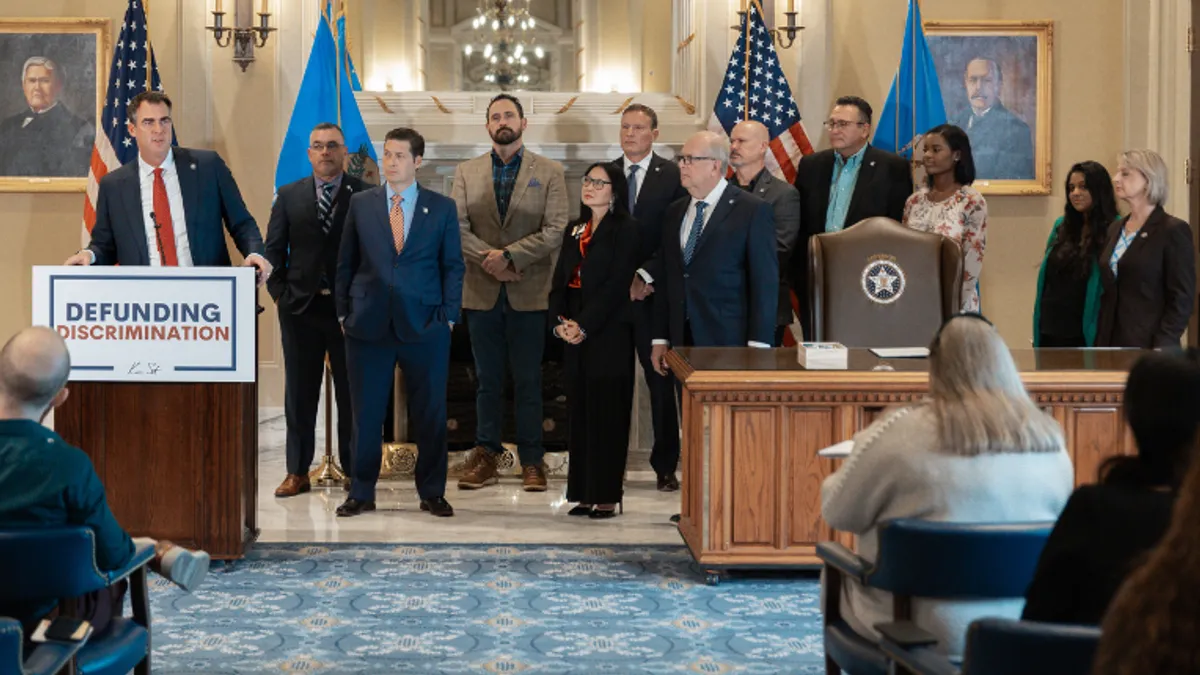In 1996, Bill Gates predicted a content boom, and even though he wasn’t the first to say it, he is often credited for the phrase “content is king.” But in higher education, where students can pick from thousands of higher education institutions or choose to engage in free experiences like Coursera or EdX – is content still king?
While the need for quality content has not changed, students are no longer buying access to content that only faculty can provide. In 2017, content is free. It is available to the masses. The new king in higher education is the learning experience – which includes authentic assessments, formative activities, opportunities for students to engage with one another, and most importantly, a qualified faculty member with the skills and tool sets to effectively engage and support each and every student.
By using the Jobs to Be Done framework, we have outlined three smaller jobs to be done that need to be considered in the learning experiences that universities offer.
1. As a faculty member, help design learning experiences that ensure students are achieving the competencies that are required for success.
Through the 20th century, faculty were the keepers of content knowledge. “Google it” was not a phrase until 2002. Watching how to do something on YouTube was not an option until 2005. In 2017, faculty are not the keepers of content, but are the curators of meaningful learning experiences. In competency-based programs where students have multiple attempts to demonstrate mastery of content, faculty need experience and expertise to provide engaging, proactive, and personalized support to students. As students engage with content, faculty can meet with students to decode unclear concepts and to provide personalized context. Faculty can provide positive feedback that encourage students to persist through difficult concepts. Faculty must shift their focus to prioritizing what a student can do with what they learn and curate a learning path that will help them achieve their goals.
But far too often today, we are not enabling our faculty to make this shift. We need to provide them with the training, support, and tools to move from a content delivery focused approach to designing a full and robust learning experience. At universities, faculty are our most precious resource. They have the ability to make the greatest impact on each and every student, but we need to invest in them so they can successfully make this shift to what our students now require.
2. As a university, offer varying degree paths that incorporate engaging, authentic opportunities to validate student learning.
Stackable credentials and competency-based programs offer opportunities for students to accelerate time to degree completion. Low-cost models, based on learning rather than seat time, can help expand access to higher education. Universities offering innovative pathways to degree completion will thrive in a world where the learning experience is king. However, regardless of the learning modality, even those who are tied to more traditional approaches can incorporate engaging and authentic opportunities to demonstrate learning.
Assessments and assignments should validate what a student knows and can do upon degree completion. They should be authentic and add value to organizations, communities, and/or the field of study. Meaningful assessments are imperative to creating a valuable experience for students—one that transparently communicates how learning can be applied in authentic settings. Instructional designers must work closely with faculty and employers to create assessments that provide transparent value to the student (demonstrates what he or she can do with what they know) and have the potential to make a positive impact within organizations, communities, and/or the field of study.
3. As a university, design learning experiences that open up access and deliver educational equity by addressing individual student needs.
As universities seek to create innovative learning experiences that expand access and equity, we must move beyond content and determine the kind of learning experience we can create that will meet the needs of every student. We must identify and implement concrete ways that recognize the individual student, assess their current knowledge and skill set, and then surround that student with the learning experiences and support models that propel them to success. An institution that creates a learning experience that recognizes and adapts to each individual can open their doors to the millions of adults who are currently struggling or opting out of our existing higher education system. These universities will survive and thrive in a crowded and competitive higher education market.
Leaders in higher education sometimes meet resistance to new learning modalities that expand access and equity, promote outcomes over inputs, and have the potential to shorten time to degree completion, as individuals seek to preserve long-held beliefs about the role of education and how it should be delivered. We believe a more just society could be created through education. In order to do this, we must be willing to move beyond just content, whether we are faculty, deans, instructional designers, or executive leaders. It is time to shift our collective focus to the learning experience for the students we serve.









